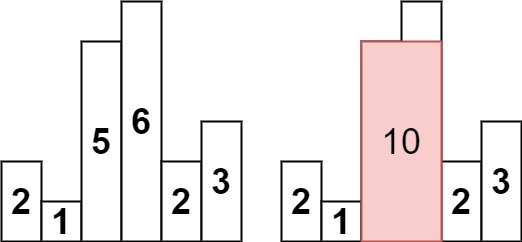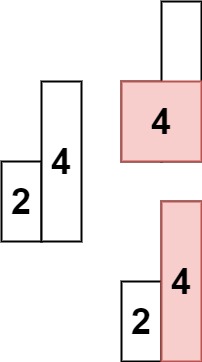Status
Development
Support
- 京ICP备2025123107号-1
- Worker 2, 82ms
- Powered by Hydro v5.0.0-beta.13 Community
给定 n 个非负整数,表示柱状图中各个柱子的高度。每个柱子彼此相邻且宽度均为 1。要求计算在该柱状图中能够勾勒出来的矩形的最大面积。
给定 n 个非负整数,用来表示柱状图中各个柱子的高度。每个柱子彼此相邻,且宽度为1。
求在该柱状图中,能够勾勒出来的矩形的最大面积。
输入n个非负整数
输出一个整数表示矩形最大面积
输入
2 1 5 6 2 3
输出
10

最大的矩形为图中红色区域,面积为 10
输入
2 4
输出
4

提示: